What is Remote Work?
Remote work is any job performed outside of a traditional office space. The flexibility allows remote employees to accomplish tasks from their homes, coworking spaces, coffee shops, or other places that are not company-sponsored.
The remote arrangement became popular during the pandemic due to lockdowns and restrictions. As the economy recovers from the pains of COVID-19, some companies opted to maintain the remote work setup. The trend of working outside of the office continues to rise because of multiple benefits like sizable savings from office utilities–rent, electricity, water, and cleaning services. Additionally, business owners delegate repetitive tasks to virtual teams to gain more time for other more important roles.
According to Forbes, another major driver of remote work in the modern workforce is the rising demand for talent worldwide. Internet access and technology have eliminated the geographical limitations in hiring talented and qualified employees through working remotely.
Several digital tools and technological advancements greatly influence the success of working remotely. If you are a virtual employee or have a remote team, you may check the list of tools to promote remote team collaboration, productivity, and work-life balance.
What Tools Do You Need To Work Remotely?
Communication and Collaboration Tools
An important factor that contributes to achieving an effective remote work environment is communication. In a virtual team, it is common to have team members living and working from different states and countries. The utilization of communication and collaboration tools will aid in promoting professional communication among remote workers. These tools allow any employee to be accountable and connected even if working from different time zones.
An article published online by Business News Daily mentioned emails are also considered communication tools. However, cluttered inboxes can sometimes make it difficult to manage and maintain conversations. The new communication platforms allow remote teams to easily follow threads and add new members to the conversation. Communication and collaboration tools break down barriers through video calls and ensure conversations are on-topic and relevant.

An example of an instant messaging platform and great remote work tool used by virtual employees is Slack. According to their website, Slack features organized spaces called channels. These channels bring order and clarity to work and create alignment.
An article published online by The Atlantic mentioned the following companies use Slack:
- Lyft
- Airbnb
- Venmo
- Tumblr
- Deliveroo
- Target
- The New York Times
- 1‑800‑Flowers
- Harvard
- AstraZeneca
Other tools popular for communication and collaboration:
- Microsoft Teams
- Zoom
Project and Task Management Tools
Project management software allows remote teams to work simultaneously in accomplishing various tasks and assignments in one place. The collaborative features allow leaders to manage projects efficiently.
Additionally, since a task management tool is usually cloud-based, managers can conveniently track the progress of the team. Other key features of these programs help employers and managers to assign tasks, plan and schedule meetings among team members, and create to-do lists.
According to Forbes Advisor, each project management tool has unique features that address the different needs of different businesses.
Here is the list of best remote work software for various demands:
- ClickUp: Best for agile development teams
- Monday.com: Best for startups on a tight budget
- Asana: Best for collaboration tools
- Zoho Projects: Best for integrations
- Smartsheet: Best for workflow automation
- Notion: Best for content creators
- Airtable: Best for data-driven companies
- Teamwork: Best for client-facing service providers
- Wrike: Best for artificial intelligence (AI) features
- Jira: Best for product and software development teams
File Sharing and Storage Tools

Remote working means needing to access various files through cloud storage. File sharing and storage tools are cybersafe platforms where companies and business owners can store millions of files for remote access for a distributed team.
A major difference between these tools and email attachments is security. Sending emails back and forth, and regularly downloading files can become a source of computer malware and virus. New file sharing and cloud storage platform prevents such problematic incidents from happening. Some tools are available for a free plan while others can be used with a paid plan.
Tim Keary, an expert in network security, enumerated the top-rated and most secure file-sharing and file-storage tools for remote workers:
- Files.com
- ExaVault
- Dropbox Business
- Google Drive
- OneDrive for Business
- Box Business
- Citrix ShareFile
- Apple iCloud
- FileCloud
- WeTransfer Pro
- Adobe Creative Cloud
Document Collaboration Tools
Some projects require multiple remote employees to work simultaneously. Document collaboration tools allow remote team members to contribute at the same time to any creative projects or software development projects.
These tools have a user-friendly interface that stimulates remote collaboration. In using such remote working software, workers can accomplish tasks more independently without manually reporting their progress. In return, managers can minimize micromanagement of the remote workforce.
Some of the best available document collaboration tools are:
- Google Drive and Workspace
- Microsft 365
- Notion
Video Conferencing Tools
Virtual meetings are carried out by using a video conferencing tool. The availability of these platforms allows meetings of multiple parties participating from different places.
According to Owl Labs, the main purpose of video calls and video chat is to help people connect regardless of their location.
Several activities can now be conducted online like team meetings, webinars, product demos, training support, and interviews. Some video conferencing tools also feature real-time messaging, and screen sharing, and integrate directly into Google Calendar for more efficient scheduling. The most common video-calling apps are:
- Zoom
- Webex
- Microsoft Teams
Time Tracking and Productivity Tools
Remote workers are usually compensated for the amount of time they have spent doing tasks. To accurately calculate the number of hours an employee has worked, time tracking and productivity tools are utilized. These applications are also essential for project budget planning. Some great remote working tools are:
- Hubstaff
- Everhour
- Harvest
Forbes Advisor identified some of the best free productivity apps that can be used by small businesses with distributed teams. Here’s the list:
- Clockify: Best Overall
- TimeCamp: Best for remote teams
- Toggl Track: Best for very small teams
- Paymo: Best for invoicing
- My Hours: Best for freelancers
- Deputy: Best for scheduling employees
- TrackingTime: Best for visual time tracking
Other Remote Work Tools

Virtual Private Networks (VPNs)
According to LinkedIn, cybersecurity is one of the challenges posed by a remote work arrangement. The availability of several VPN services addresses this issue. VPNs are tools available both for free and paid plans that protect the physical network and personal devices too. Remote workers who use VPNs create a secure and encrypted connection between their device and a remote server. Since virtual employees need to access work files, that sometimes contain private information, the encryption provided by VPNs scrambles the contents of files–making it unreadable in a way that can only be decrypted using a key. A VPN is a great tool for virtual workers because it also hides the IP address and online activity of the user. This feature is useful in accessing geo-restricted websites.
Common VPNs used by remote workers:
- ExpressVPN
- NordVPN
- IPVanish
Password Management Tools
Companies and their employees need to practice precautions when creating login information. One smart strategy is to use unique and strong passwords for different platforms. The challenge arises when people forget their passwords. According to an article published online by PC Magazine, password managers address this issue by generating new login information for every website the user visits. Outstanding password managers provide information if the user’s existing passwords are weak, reused, or have shown up in a data breach. Studies suggest strong passwords are at least 20 characters long and include all the major character types like uppercase, lowercase, numbers, and symbols.
Common password management tools for remote employees:
- LastPass
- Dashlane
- Bitwarden
Dream Team: Productive, Safe, Accountable
Remote team management can be challenging. Fortunately, tools for remote work arrangement and software for managing distributed team members have been developed and made available to the public. Virtual workers and people aspiring to secure a remote job are encouraged to utilize even the simplest remote work tools to improve the quality of work. The best remote working tools have key features that promote collaboration, and team communication, and assure all team members work on the same page.
Because of the outside-of-office setup, virtual employees are commonly required to use employee monitoring software for project managers to efficiently track progress. Besides software and digital platforms, remote employees also need to invest in good-quality gadgets. Reliable virtual workers have high-functioning computers and equipment that can handle third-party apps, video conferencing apps, and project management tools, and have a large capacity for file storage or cloud storage like Google Drive.
Do You Have The Tools and Talents To Become A Virtual Worker?
Are you interested in work-from-home opportunities? If you want to secure a remote job, it is important to acquire the essential tools and skills. Once you have obtained the essential knowledge and proper equipment, you may start submitting your applications to clients from platforms like LinkedIn and Upwork.
Another legitimate company that hires remote workers is Remote Raven. The company seeks qualified individuals to perform remote roles like virtual executive assistant, medical coder, bookkeeper, and social media marketer. Remote Raven connects talented individuals to clients and business owners seeking employees they can trust to delegate day-to-day tasks.
Contact Remote Raven and start your career now.





